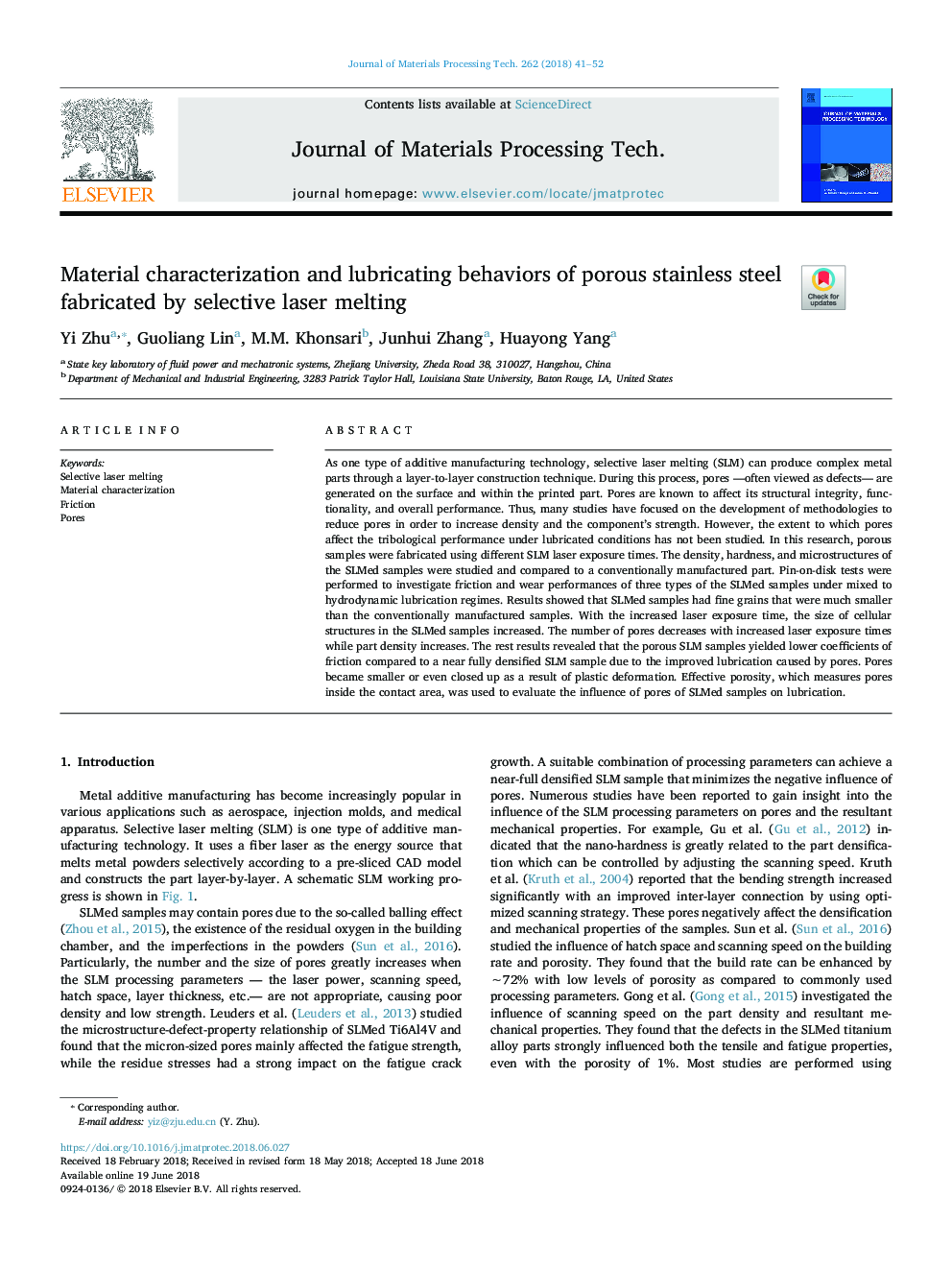| Article ID | Journal | Published Year | Pages | File Type |
|---|---|---|---|---|
| 7176167 | Journal of Materials Processing Technology | 2018 | 12 Pages |
Abstract
As one type of additive manufacturing technology, selective laser melting (SLM) can produce complex metal parts through a layer-to-layer construction technique. During this process, pores -often viewed as defects- are generated on the surface and within the printed part. Pores are known to affect its structural integrity, functionality, and overall performance. Thus, many studies have focused on the development of methodologies to reduce pores in order to increase density and the component's strength. However, the extent to which pores affect the tribological performance under lubricated conditions has not been studied. In this research, porous samples were fabricated using different SLM laser exposure times. The density, hardness, and microstructures of the SLMed samples were studied and compared to a conventionally manufactured part. Pin-on-disk tests were performed to investigate friction and wear performances of three types of the SLMed samples under mixed to hydrodynamic lubrication regimes. Results showed that SLMed samples had fine grains that were much smaller than the conventionally manufactured samples. With the increased laser exposure time, the size of cellular structures in the SLMed samples increased. The number of pores decreases with increased laser exposure times while part density increases. The rest results revealed that the porous SLM samples yielded lower coefficients of friction compared to a near fully densified SLM sample due to the improved lubrication caused by pores. Pores became smaller or even closed up as a result of plastic deformation. Effective porosity, which measures pores inside the contact area, was used to evaluate the influence of pores of SLMed samples on lubrication.
Related Topics
Physical Sciences and Engineering
Engineering
Industrial and Manufacturing Engineering
Authors
Yi Zhu, Guoliang Lin, M.M. Khonsari, Junhui Zhang, Huayong Yang,
